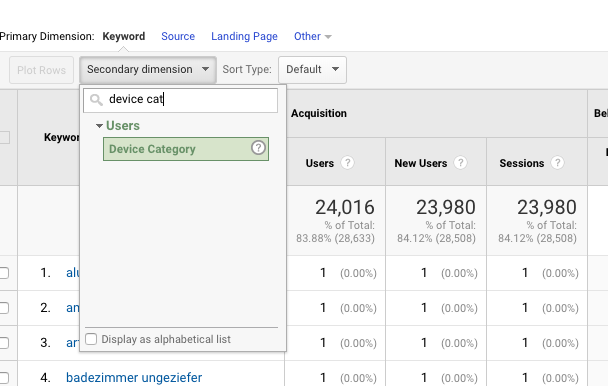Improve Your Data Analysis with Secondary Dimension in Google Analytics
Unlock Deeper Insights With Secondary Measurement in Google Analytics
With the substantial area of information available in Google Analytics, the usage of second dimensions can considerably improve your analytical capabilities. By strategically incorporating additional dimensions into your analysis, you can unearth useful understandings that may or else remain undiscovered - Secondary Dimension in Google Analytics.
Understanding Primary Vs. Secondary Measurements
On the other hand, additional measurements allow you to further study your primary dimension information. By including a secondary dimension, you can layer on extra details to your main measurement, allowing an extra granular evaluation. If your primary measurement is the source/medium via which users showed up on your website, including a secondary dimension like geographic place can expose where those customers are located geographically.
Using Secondary Measurements Successfully
By incorporating second dimensions alongside key measurements, marketing professionals and analysts can dig deeper right into the specifics of user interactions on their sites. Second measurements permit individuals to segment and filter primary dimension information even more, using a more comprehensive sight of user communications, demographics, and behaviors.
Moreover, secondary measurements enable individuals to compare and contrast different information factors within a single report, facilitating a much more thorough analysis of individual actions patterns. By leveraging second dimensions successfully, businesses can reveal concealed insights, optimize their advertising strategies, and improve the total customer experience on their web sites.
Discovering Usual Additional Measurement Combinations
To further examine user habits and fads in Google Analytics, it is valuable to check out usual mixes of second dimensions. Some typical second measurement combinations that supply beneficial insights consist of examining website traffic resources with customer locations to comprehend where website visitors are coming from geographically and exactly how they located the site. Examining user habits metrics with secondary dimensions such as passions or demographics can help in targeting details audience segments much more properly.
Using Additional Dimension in Custom Reports
Making use of additional dimensions in custom reports allows for a more thorough analysis of data in Google Analytics, enhancing the deepness of insights acquired. When creating customized records in Google Analytics, including second measurements can offer an extra thorough sight of exactly how various dimensions engage with each other. This feature enables individuals to dive deeper right into their information and discover beneficial correlations read what he said that might not be immediately obvious.
By applying second measurements in custom reports, customers can get a much better understanding of their web site or app website traffic. Incorporating the primary measurement of "source/medium" with the second dimension of "landing page" can reveal which touchdown pages are executing finest for website traffic coming from details sources. This understanding can aid online marketers enhance their projects and enhance overall conversion prices.

Enhancing Data Visualization With Secondary Dimension
When discovering information in Google Analytics customized reports, including my site second dimensions not only supplies a more in-depth evaluation but also boosts the visual representation of insights with information visualization. By including a second measurement to your reports, you can enhance the method data exists, making it simpler to determine patterns, fads, and connections within your internet site's efficiency metrics.
Second measurements can aid you sector your information further, enabling a deeper understanding of user behavior and interactions on your website. When attempting to isolate certain variables that may impact your site's performance., this enhanced degree of granularity can be particularly helpful.

Final Thought
In conclusion, leveraging additional dimensions in Google Analytics permits for a much more comprehensive analysis of information, resulting in much deeper understandings and even more informed decision-making. Secondary Dimension in Google Analytics. By including additional layers published here of information to key data collections, marketing experts and analysts can discover covert fads, patterns, and connections that give a granular view of customer behavior and interactions. This improved degree of insight makes it possible for optimization of campaigns and tailored approaches for particular target market segments, inevitably improving efficiency and conversion prices
On the various other hand, additional measurements permit you to further explore your key measurement data. By adding a second measurement, you can layer on additional information to your key dimension, enabling a more granular evaluation. If your key dimension is the source/medium via which customers arrived on your website, including a secondary dimension like geographical location can reveal where those users are located geographically. By integrating additional measurements along with primary dimensions, analysts and marketing experts can dig deeper into the specifics of individual communications on their web sites. Additional dimensions permit individuals to section and filter primary dimension data even more, providing an extra detailed sight of customer habits, demographics, and interactions.